
Invertebrates Around Las Vegas, Wildlife Around Las Vegas
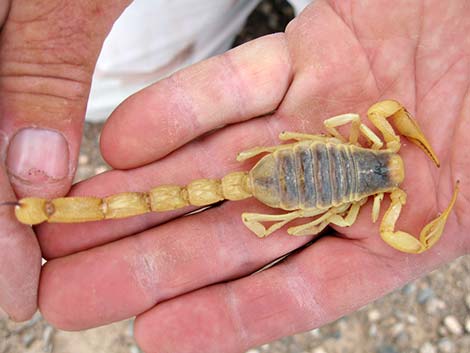 This is one big scorpion! (dorsal view) |
Giant Desert Hairy Scorpions (Hadrurus arizonensis) are large scorpions with a black "back" and a yellow "head." A similar species, the Northern Desert (Black) Hairy Scorpion (Hadrurus spadix), has a black back and a black head. Other species are smaller. The common name comes from the size, habitat, and brown "hairs" that cover the body. Giant Desert Hairy Scorpions are found in the arid deserts of the southwestern USA (Arizona, California, Nevada, and Utah) and northern Mexico. They avoid extreme summer temperatures and low humidity by digging deep burrows (where it is cool and moist) and by coming out at night. They avoid winter cold by staying in their burrows. For scorpions, Giant Desert Hairys grow very large (to about 5-1/2 inches). Like other scorpions, this species gives birth to live young, and the young ride on their mother's back before venturing out on their own. |
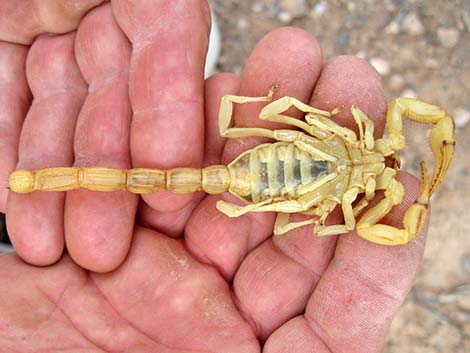 Don't try this at home (ventral view) |
Scorpions are nocturnal and come out during warm weather, but they really like hot nights. Scorpions also glow under black lights, so they can be illuminated at night. A walk about in the desert on a hot night (over 100 degrees at night) with a black light can truly be a scary and life-changing adventure when they appear to almost cover the ground. After an adventure in the desert on a hot night several years ago when we saw literally thousands of scorpions just south of Las Vegas, my wife still doesn't like to sleep on the ground in the desert. Giant Desert Hairy Scorpions feed on anything they can catch, including other scorpions. Their size also makes them big enough to feed on small vertebrates, including mice, lizards, and snakes. |
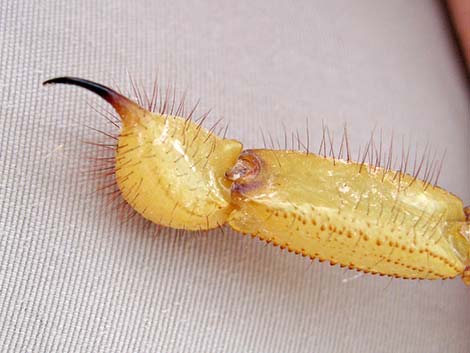 Stinger (note the hairs on the hairy scorpion) |
Scorpion Stings This large scorpion has weak venom and is said to be about as painful as a honeybee sting, but allergic reactions can be fatal; symptoms can include: difficulty breathing, swelling, and prolonged pain. In general, large scorpions are less toxic to humans than small scorpions. If you get stung, consider calling the National Poison Control Center toll-free at (800) 222-1222. This number is good for emergency information as well as general information and questions. |
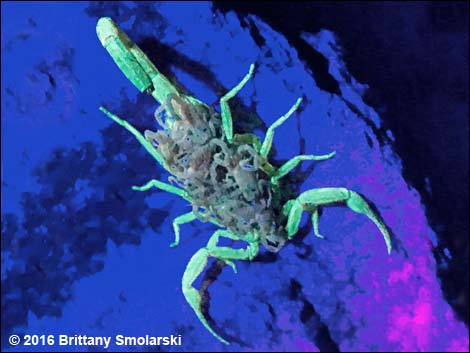 Momma carrying kids on her back (photo by Brittany Smolarski) |
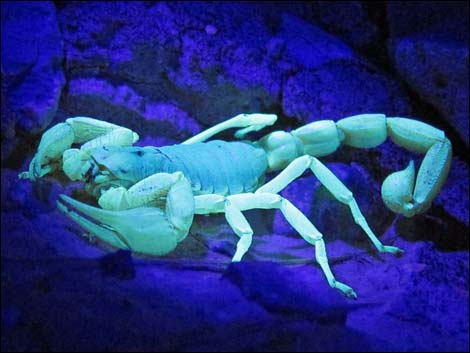 Adult glowing under ultraviolet (UV) light |
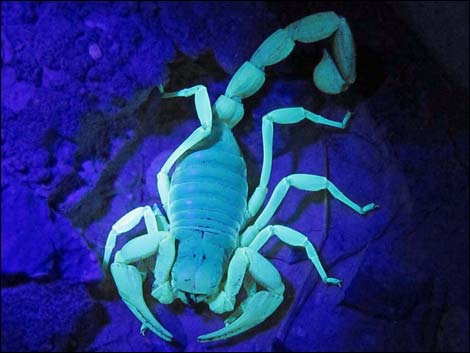 Adult glowing under ultraviolet (UV) light |
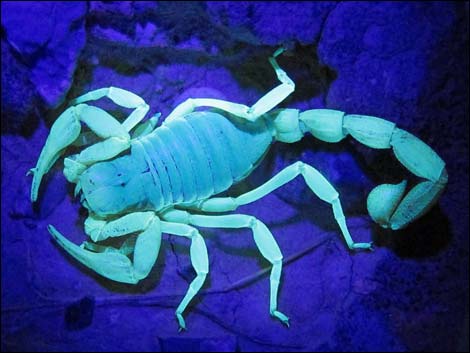 Adult glowing under ultraviolet (UV) light |
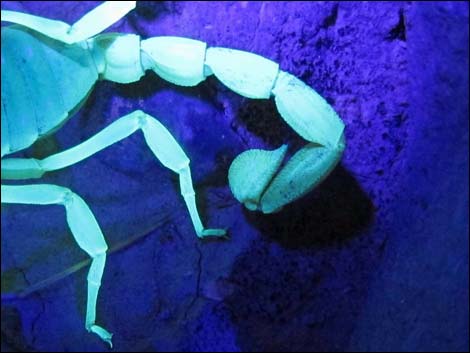 |
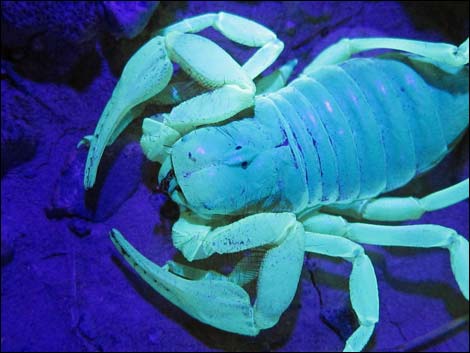 |
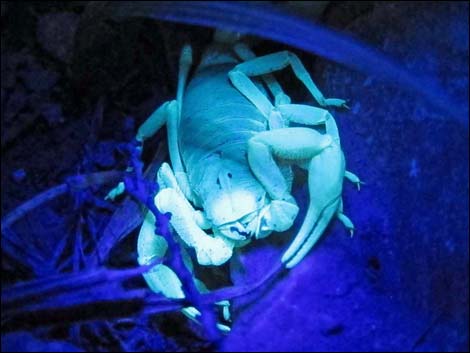 Adult glowing under ultraviolet (UV) light |
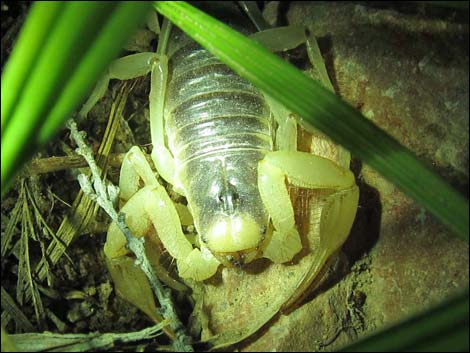 Same scorpion under white (regular) light |
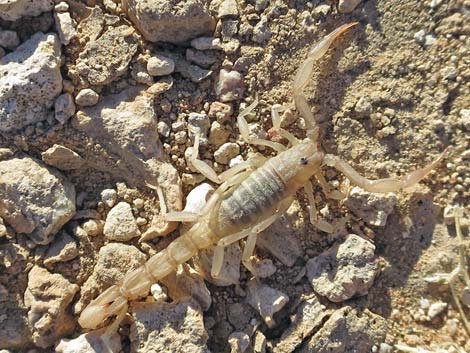 |
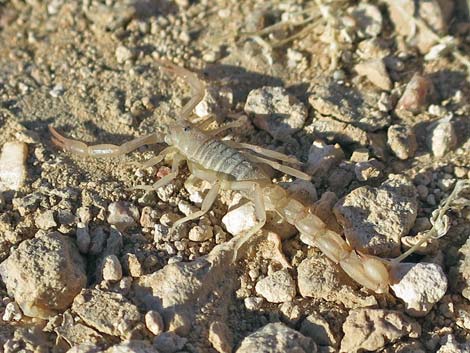 |
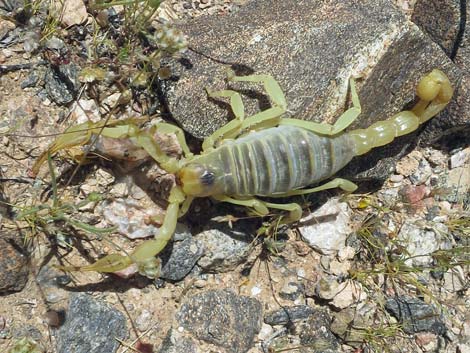 Giant Desert Hairy Scorpion in Gold Butte National Monument |
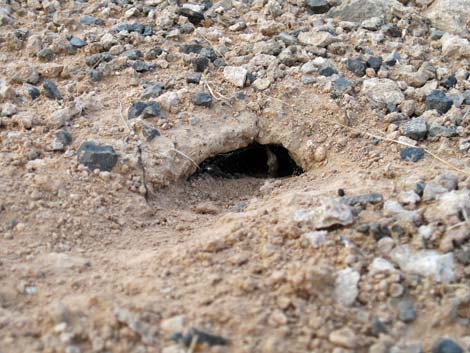 Scorpion burrow |
 Note the dark back and light "head" |
 Note the dark back and light "head" |
Note: All distances, elevations, and other facts are approximate.
![]() ; Last updated 240201
; Last updated 240201
| Scorpions | Inverts Around Las Vegas | Wildlife Around Las Vegas | Glossary | Copyright, Conditions, Disclaimer | Home |